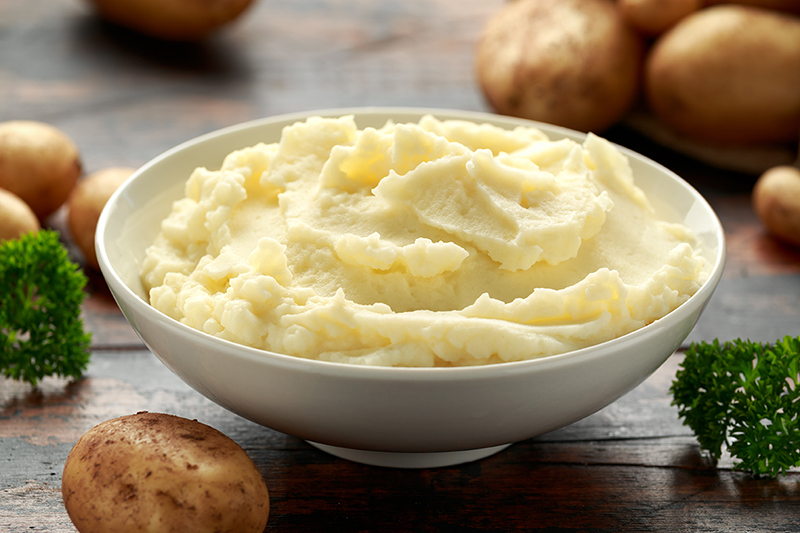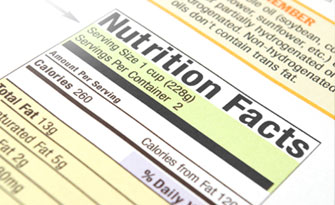4 Tips for Creating Healthy Grocery Lists
Sticking to your health goals doesn’t have to be as complicated as it seems.

Less than 3% of Americans are living a healthy lifestyle. A key component of a healthy lifestyle is eating foods that benefit your overall health, and what you buy at the grocery store greatly impacts your eating habits.
Here are a few tips to help you get started:
Educate yourself
The first thing determined dieters do when trying to stick to a new health regimen is making drastic changes to their diet by cutting carbs, going gluten-free, dropping sugar altogether, and reaching for items that are “low fat” or “reduced sodium.” While these dietary changes can influence your health to some degree, not educating yourself on what your body needs can prevent you from meeting your health goals.
For example, some gluten-free items are much more calorie and sugar dense than regular versions. Processed foods that claim to be lower in fat often have added sugar and sodium to compensate for flavor.
So, before reaching for foods you instinctively deem “healthy,” learn how to read food labels and determine what your daily carb, sugar, fat, and sodium intake should be as well as what ingredients you should be wary of. As you are out grocery shopping, you’ll know what to look for to create healthy at-home meals.
However, before making any drastic changes to your diet, speak with your healthcare provider or a dietitian.
Related: Should You See a Dietitian or Nutritionist?
Looking to schedule an appointment with a dietitian? Select Health members can use the Find a Doctor tool to locate a nearby specialist.
Make a plan
You need to know what your health goals are, so when you go shopping, you know what to pick up.
- What are your overall goals for eating healthier?
- Do you want to lose weight?
- Do you want to maintain your current weight?
- Do you want to improve how you feel overall?
- Does your health require you to lower your sodium or sugar intake?
Another helpful way to stick to your goals is by determining your macro count.
Macros (short for macronutrients) are the fats, proteins, and carbs that make up food and create energy in your body. The amounts of these three nutrients vary from person to person depending on your body composition and goals. Regardless, macros can help you know what to shop for when it comes to good sources of protein, healthy fats, and healthier carbs.
Related: 5 Ways to Stick to a Healthy Diet
Go for quality
Although dinner time can be a bit tedious with all the preparation and planning involved, it’s always best to prioritize quality when it comes to nutrition. For example, many of the different food groups have multiple versions of products, but some are superior to others.
Here are a few things to consider during your next trip to the grocery store:
Fruits and vegetables
- Shop for a variety of fresh fruits and vegetables.
- If canned, opt for produce with a “low sodium” label.
- Frozen fruits and vegetables are also a great choice.
- If helpful, you can buy pre-cut fruits and vegetables to make them convenient to eat.
Breads and grains
- Choose grains which are high in fiber and low in added sugars.
- Opt for whole grains and whole wheat when it comes to bread and pasta.
Dairy products
- Eggs are a great source of protein, but egg whites are a less fatty alternative.
- Choose plain yogurts instead of pre-flavored yogurts that are often filled with added sugars.
- Nut-based milks like cashew or almond can be excellent replacements for those who are lactose intolerant.
Proteins
- Lean meats like chicken, turkey, and fish are all great healthy choices, but ground beef can also be part of your dinner menu if it has a low fat percentage.
- Protein powder shakes with little to no added sugar can also be great sources of healthy protein each day.
Oils and condiments
- Olive, avocado, and canola oils are all great options for healthy cooking oils.
- Be wary of added sugars and high sodium and calorie levels on ingredient lists of your favorite condiments.
Snacks
- String cheese and sliced turkey breasts are high-protein, low-carb, and low-fat snacks.
- Low-sodium or lightly salted nuts and seeds are healthy snack options.
- Reach for dark chocolate that is at least 70% cocoa for a sweet treat.
- Whole-grain crackers, natural nut butter, and hummus can be healthy options as well.
- If you have a sweet tooth, head down the baking aisle and grab a bag of stevia sweetener. Using this sugar alternative in your favorite treats doesn’t affect blood sugar levels and allows you to indulge in sweets now and again without the harmful effects of refined sugar.
Make small changes
The greatest habits come by making and sticking to small, attainable changes. As you make plans for healthier grocery lists, keep in mind what would help you stick to your healthy eating.
If you tend to overeat junk food in the house, don’t add it to your list in the first place. If you want to eat more fruits and vegetables, but don’t ever have the time or patience to cut them up, buy them pre-cut so they are just as convenient of a snack as a bag of potato chips.
Swap your eggs for egg whites or your milk with almond milk if you are looking to lower your fat intake. Buy wheat bread instead of white. Small changes like these can help you truly make a change and set new healthy lifestyle habits.





